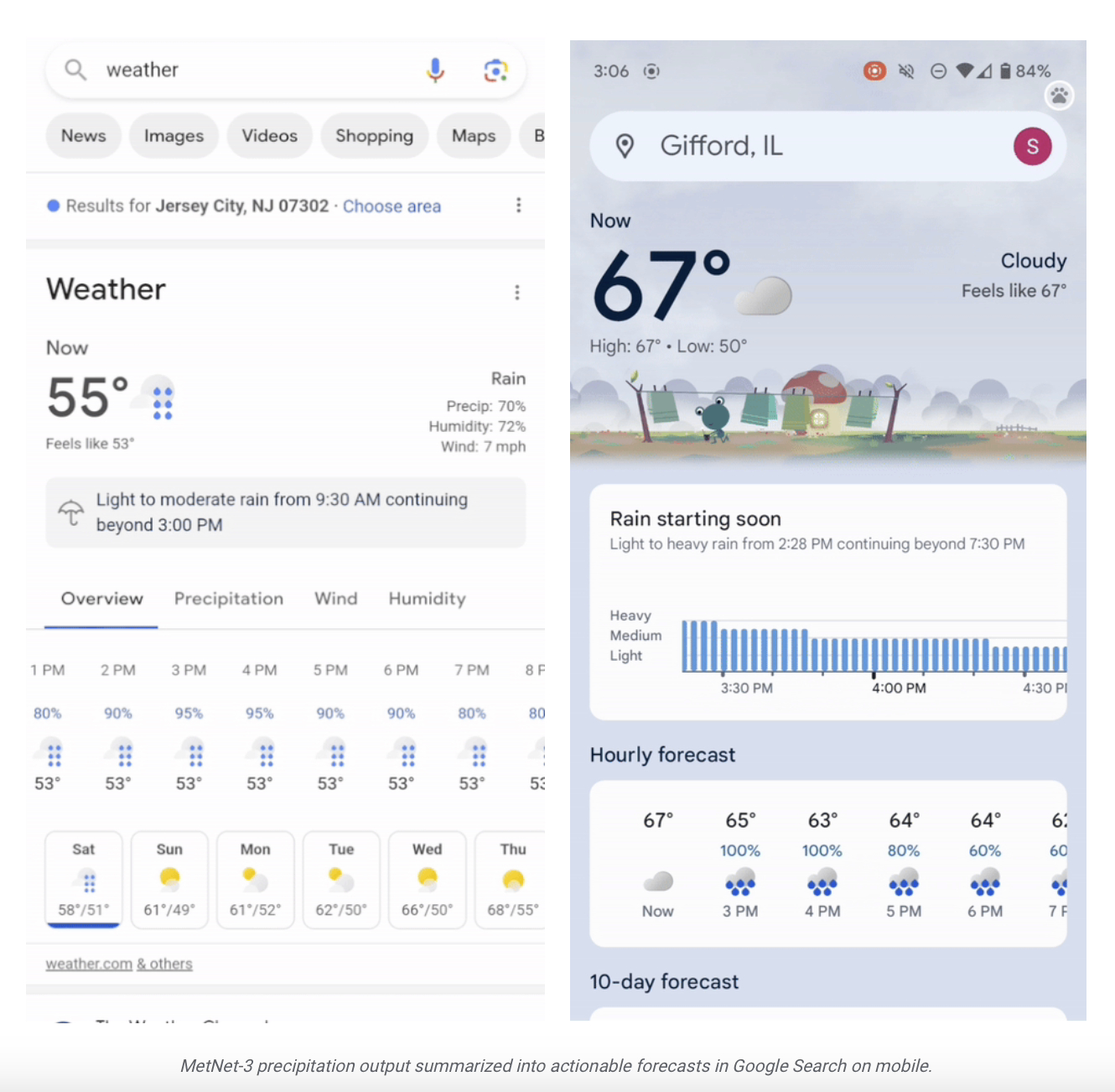
It was reported on November 3 that Google Research and DeepMind collaborated to develop the latest weather model MetNet-3, which is based on the previous MetNet and MetNet-2. It can make high-resolution predictions of global weather conditions 24 hours in advance, including precipitation, surface temperature, wind speed, wind direction and body temperature.

This site found that Google mentioned that the MetNet-3 model has been implemented in the "Google Mobile Software" weather forecast on the mobile platform.


MetNet-3 model can create "smooth and highly accurate" forecasts with spatial resolutions ranging from 1 to 4 kilometers, and The analysis interval is 2 minutes. Experiments have proven that the prediction ability of MetNet-3 surpasses traditional physical weather forecast models. For example, the traditional physical basic models "NWP (Numerical Weather Prediction)" and "Rapid Refresh Model (HRRR)" are both surpassed by MetNet-3

MetNet-3 is different from other machine learning methods based on traditional methods in predicting weather. The key point is that MetNet-3 directly uses atmospheric observation data to train and Evaluate. The researchers mentioned that the advantage of direct observation is higher data density and resolution. In addition, in addition to inheriting the data from the previous MetNet model, MetNet-3 also newly learns temperature and wind measurement data from weather stations to try to conduct comprehensive weather predictions for all locations.

Researchers pointed out that the key innovation of MetNet-3 is the use of densification technology to improve the accuracy and coverage of weather forecasts
In traditional In basic physical models, weather forecasting usually requires two steps, namely data assimilation and simulation. Data assimilation refers to integrating actual observation data into the model, while simulation predicts weather based on these data. .
Densification technology is used in MetNet-3 to merge the two steps of "data assimilation" and "simulation" through neural networks to achieve faster and more direct weather predictions. The technology increases the efficiency with which models acquire and process data, and utilizes neural networks to improve the accuracy of weather forecasts. At the same time, the MetNet-3 model is able to independently process each specific data stream containing contour information, satellite information, radar information, etc., thereby obtaining a more accurate and comprehensive weather forecast
In addition, using "direct observation" The data is used as a learning sample to bring high-resolution advantages based on space and time to the MetNet-3 model. Weather stations and ground radar stations can provide measurement data at specific locations with a resolution of 1 km every few minutes. . By comparison, even the world's most advanced physical models can only generate data at 9 km resolution and provide hourly forecasts every 6 hours.

MetNet-3 can effectively process and simulate the collected observation data at intervals as short as 2 minutes, combined with densification technology and lead time adjustment (Lead Time Conditioning) technology and high-resolution direct observation method, MetNet-3 can produce 24-hour forecasts with a time resolution of 2 minutes, providing users with more accurate and real-time weather forecast information.

In addition, MetNet-3 also utilizes precipitation estimates from ground radar, which allows it to learn from a wider range of data compared to weather information observed at weather stations. Therefore, the prediction results of MetNet-3 are better than the industry's most advanced physical models in terms of wind speed and precipitation.
The main value of MetNet-3 is that it can accurately predict weather with machine learning technology in real time and provide weather forecast services on Google products. The model continuously creates complete and accurate forecasts based on the latest data that is constantly collected. Researchers mentioned that this is different from traditional physical reasoning systems and can better meet the unique needs of weather forecasting.
The above is the detailed content of Google launches 'advanced weather forecasting AI” MetNet-3, claiming that its prediction results exceed traditional physical models. For more information, please follow other related articles on the PHP Chinese website!













